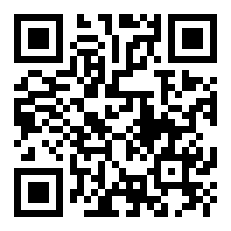Modelling indigenous counting systems for base-10 and related applications: Abureni numerals as case study
Keywords:
Indigenous counting system, numbering, Abureni numerals, base-10, modellingAbstract
Indigenous counting systems and numbering have unique attributes that are linked to the cultures of their speech communities. Indigenous people have used various methods of counting and numbering things based on the meaning they intend to communicate, in terms of their value and significance. A counting system starts from small simple singleword numbers and grows to large complex numbers that may be descriptive in nature. As the numbers increase, they become more difficult to count, requiring the use of certain key numerals as pivots to produce their multiples in a cyclical pattern. However, these pivotal numerals upon which a particular counting system is based vary from one tradition to another. The introduction of base-10, the concept of 'zero' as a number, and the use of binary logic in digital technology have become universal standard methods of addressing such ethno-cultural variations. They are significant in the discourse of language and globalization, especially in the computation and business environment of today. This paper seeks to contribute to the discussion on the need to model the features of indigenous counting systems such that they benefit from the inherent gains of base-10 and related applications of the modern day. It adopts a semantic-pragmatic approach to describe and analyse indigenous numbering patterns against those of base-10, using the Abureni numerals as the data for the study. The objective is to show the points of synergy that the numerals could be modeled for base-10 applications in a manner that
they sound natural in the indigenous language, in terms of context and meaning. The paper concludes that the features of an indigenous counting system can be patterned to produce a base-10 model of it, without disrupting the traditional numbering pattern of the target language.
References
American heritage dictionary definition: forty-. (2011) American heritage® dictionary of the English language, fifth edition. Retrieved May 30 2021 from
https://www.thefreedictionary.com/fortyBeardon, T. (2010). Learn about number bases. NRICH millennium mathematics project: Learn about number bases, Age 11-18, published 2000 revised 2010. Cambridge University. https://nrich.maths.org/1368. Accessed 19th April 2021.
Benton, M. (2020). Paul Grice - Philosophy. In Oxford Bibliographies. 29 July 2020. DOI:10.1093/OBO/9780195396577-0257. https://www.oxfordbibliographies.com/view/document/obo-9780195396577/obo/9780195396577-0257-0257.xml. Accessed 30th August 2022.
Betti, M. J. (2021). Grice’s Maxims. In Research Gate. September 2021. DOI:10.13140/RG.2.2.12486.60487. https://www.researchgate.net/publication/354554834_Grice%27s_Maxims.Accessed 30th August 2022.
Britannica, T. Editors of Encyclopaedia (2013, July 22). Fathom. Encyclopedia Britannica. https://www.britannica.com/science/fathom. Accessed 30th May 2021.
Chan, E. S. L (2020). Counting concepts and numeral systems project (African languages). www.https:/mpi-lingweb.ssh.mpg.de/numeral/abureni.htm. Accessed 31st March 2021.
Dada, S. A; Owoeye, O; Ojo, G.A. (2015). Indigenous language maintenance in Nigeria. Journal of Linguistics Studies, 1 (1), pp 1-35.
EasyCalculations. (2021). What is standard form – definition and meaning. https://www.easycalculation.com/maths-dictionary/standard_form.html#:~:text.Accessed 27th May 2021.
Etire, D. (2015). Ó̠ wàl Á̠ b̠ ùrénì ‘Abureni numerals.’ Port Harcourt: Onyoma research publications.
Etire, D. (2020). Abureni numerals 1-2000. In Chan, E. S. L (Ed.). Counting concepts and numeral systems project (African Languages).www.https:/mpilingweb.ssh.mpg.de/numeral/abureni.htm. Accessed 31st March 2021.
Grandy, R. E. (1989). On Grice on language. In The Journal of Philosophy. Volume 86, Issue 10, October 1989. pp. 514-525. https://www.pdcnet.org/jphil/content/jphil_1989_0086_0010_0514_0525. Accessed 30th August 2022.
Ikoko-Okparan, T. D. D; Awaki-Gam Dede, S. C; Mangi-Pegi, S. (2007). Nembe numerals. Port Harcourt: Onyoma Research Publications.
Madighi, W. I. 2019. I̠ bal Abuan. Port Harcourt: Pearl Publishers International. Merriam-Webster (2021). Quaternary. In Merriam-Webster.com dictionary (since 1828). https://www.merriam-webster.com/dictionary/quaternary. Accessed 20th April 2021.
Meleen, M. (2021). “Metric system vs. imperial system: differences and use. Metric System vs. Imperial System: Differences and Use (yourdictionary.com).
Accessed 30th March 2021.
Morris, M. (2006). Grice on meaning. In An Introduction to the Philosophy of Language (Cambridge Introductions to Philosophy, pp. 248-270). Cambridge: Cambridge University Press. doi:10.1017/CBO9780511801464.014. Oxford Dictionary on LEXICO. (2021). “Base.” BASE | Definition of BASE by Oxford Dictionary on Lexico.com also meaning of BASE. Accessed 24th May 2021.
Shatz, I. (2019). Grice’s Maxims of Conversation: The Principles of Effect Communication. Effectiviology. October 19, 2019. https://effectiviology.com/principles-of-effective-communications/. Accessed 30th August 2022.
Weisstein, E. W. “Base.” From MathWorld – A Wolfram web resource. https://mathworld.wolfram.com/Base.html. Accessed 19th April 2021.
Weisstein, E. W. “Decimal.” From MathWorld – A Wolfram web resource. http://mathworld.wolfram.com/Decimal.html. Accessed 20th April 2021.
Weisstein, E. W. “Quaternary.” From MathWorld – A Wolfram web resource. http://mathworld.wolfram.com/Quaternary.html. Accessed 19th April 2021.
Williamson, K. (1989). “Benue-Congo overview”. In Bendor-Samuel, John and Hartell, Rhonda L. (Eds), The Niger-Congo languages. New York: University Press of America.
Wilson, D. & Sperber, D. (1981). Relevance theory. https://www.phon.ucl.ac.uk/publications/wpl/02papers/wislon_sperber.pdf. Accessed 12th April 2021











